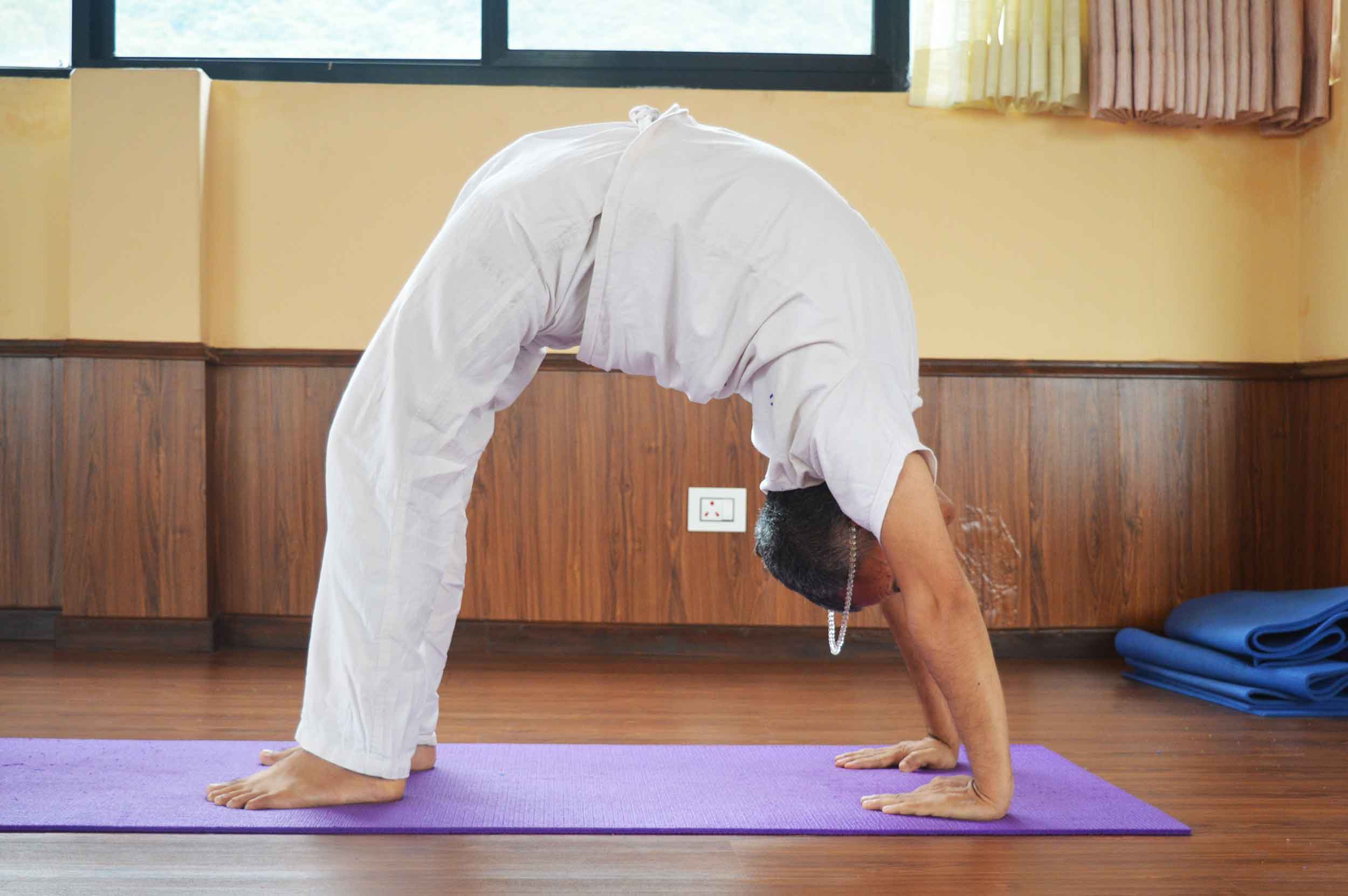
5 Aug 2022 HYN Himalayan Yoga Academy
Despite possessing the power and flexibility necessary to do Chakrasana, Kapotasana, or Ustrasana, have you been experiencing trouble? Back bending Yoga Asanas -Is this the fear?
Why is it so fearful to fall into backbends than forwarding bends?
Backbends are not as much a natural movement of the body and also have no visibility of where someone is falling, there is always a fear of falling into the unknown. Forwards bends are something we perform quite frequently in our daily activities. Additionally, one can see where they are falling and have the security to land their palms safely. The majority of us deal with our judging minds and clinging egos as well as our flexibility and strength when minds and clinging egos as well as performing backbends, which is a difficult connection.
These heart-opening positions need a lot of mental and physical fortitude since they feel like Pandora`s box that lets confusion, attachments, and fear out. Backbends are a beautiful opportunity to experience Yoga in its fullest form, as this practice focuses on body and mind in equal proportions.
How to resist fear of back bending emotionally?
The five kleshas, or mental afflictions, described in the Patanjali Yog Sutras as Avidya (ignorance), Asmita (identifications with the ego), raga ( attachments), dvesha ( aversion), and abhinivesha, are thought to be associated to the anguish we experience during backbends,( fear specifically of death). Anyone who is frequently experiencing fear and aversions will notice stiffness around their heart and diaphragm as a result.
We are all aware that when we are strong and confident, our bodies are more open to new possibilities, whereas when we are afraid, we naturally slouch forward and round our shoulders into the fetal position, which is the position where we feel the most secure. Another justification for why we aren`t afraid of forwarding bends is we find it safer.
For one to be emotionally prepared, we can just sit in a relaxed position and observe the thoughts in the mind, the feelings, and the emotions that arrive when we are doing back-bending asanas. Embrace these kleshas with love and empathy, be more aware of yourself without any judgment and criticism and you will see great progress in releasing any emotions that block you while doing this posture.
How to prepare yourself for Backbending Postures?
Keep your spine healthy:
Our spine is the base of our central nervous system as it is the main center for energy flow and movements within the pranic body. So, mindful movement of the spine will certainly help for the healthy structure and movement of the spine. Our spine is designed to move in 6 different directions – forward, backward, side to side, and twisting both sides. So, proper movement of the spine encourages the healthy movement of energy. Some of the postures that help the spinal movement are the cat and cow pose, marichyasana B, and seated side bend.
Doing some backbend postures actively:
Backbends help to develop the muscles that surround the spine in the back in addition to stretching the front body. You can perform poses like the locust pose, upward bow poses without gripping your ankles, and cobra poses with your hands off the mat. Your confidence to assume a deep backbend posture will increase as a result of performing these active backbends.
Rise into backbends before falling:
This one is very important to know; looking into the Instagram videos the way they directly fall into the backbend. This will only increase the fear and lead to greater injury to your lower back. So try to rise in backbends, for example for chakrasana, lie on the floor with knees bent, place the palms under your shoulders, and lift, practice this and try to stay for good for 15-20 breaths.
Understand where you need to be more flexible and work towards that:
For Chakrasana, your body needs to be a lot more flexible, particularly quads and psoas. So do some postures that will lengthen these muscles like lizard poses, and low lunge side bends.
Start slow on falling back:
As it has a lot to do with the mind. Start slowly. Especially for Chakrasana, try to fall back with wall support first of all then come back up. This also may not be as easy as it seems but if you know where your body exactly needs the resistance then it will be easier for you to do it in the second attempt.
Always keep your lower back safe:
You can tuck your tailbone down and keep moving your hips forward, this will put less pressure on your lower back and you will get used to bending from your upper back.
Don`t forget to breathe:
The most important one is you have to keep breathing throughout the entire practice. Asanas will be much easier to do when one finds stillness in the moment which occurs by gaining control over the breath.
